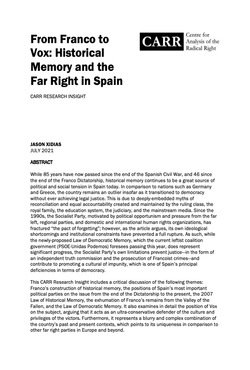By Haroro J. Ingram and Jon Lewis
This study begins by establishing the foundation for the conceptual framework through which the authors analyze the leadership and impact of Beam, Pierce, and Mason. It draws on the Ligon et al. CIP (Charismatic, Ideological, and Pragmatic) leadership model with its dual focus on leadership typologies and six life events that tend to characterize the life narratives of outstanding leaders. Our framework is further supplemented by a more nuanced conceptual grounding in charismatic leadership theory. It then features the three central case studies. These case studies seek to examine the respective backgrounds, leadership styles, influence, and lasting appeal of these American ideologues. It traces their life experiences, reviewing the totality of their contributions to their respective far-right milieus. In doing so, it examines their roles within specific right-wing movements as well as their roles as nodes that connected disparate elements of the modern far-right. This study concludes by drawing out key overarching findings that emerge from the preceding analysis. Specifically, it focuses on the enduring legacies of Beam, Pierce, and Mason by reflecting on how they have collectively impacted the evolution of violent far-right movements, and considers how the differences in the leadership types and life narratives have shaped that legacy. Finally, it offers policy insights and avenues for future research with respect to the modern far-right landscape and the role of charismatic leadership in prominent white supremacist movements active today.
Washington, DC: George Washington University, Program on Extremism, 2023. 85p.










